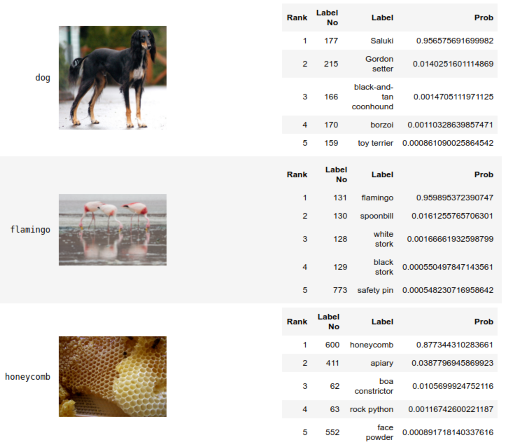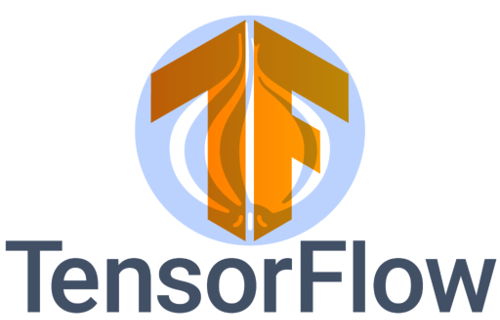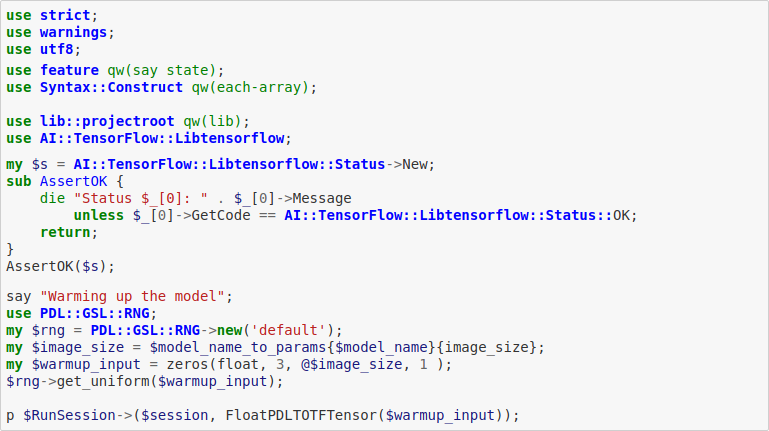Products :: TensorFlow :: Image Classification
Photos. Automatically Identified.

The
Perl TensorFlow Tutorial
produces output showing the top 5 potential classifications of each input test image.
Where possible, specific plant & animal breeds are automatically determined.
Each potential image class is given a statistical probability ranging from 0 (impossible) to 1 (certain).
All probabilities for a given image should add up to a total value of 1.0, representing 100% certainty overall.
Machine learning image classification can be used for a wide variety of academic & commercial
applications, such as machine vision, warehouse inventory control, biomedical research,
facial recognition, and wildlife conservation, to name just a few.
Features of the
Perl TensorFlow Image Classification
includes:
- Impressive visual demonstration of machine learning
- Clickable links to the original
Wikipedia input files
- Statistical probabilities for each possible classification
- Variety of pre-defined sample images
- Easy to read graphical formatting

 Auto-Parallel Technologies, Inc.
Auto-Parallel Technologies, Inc.
